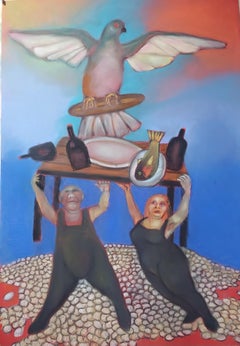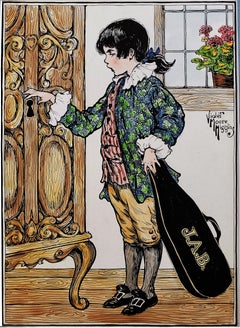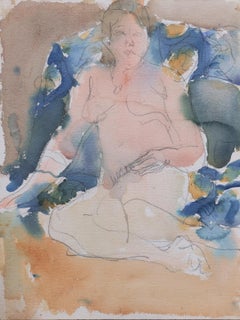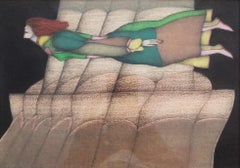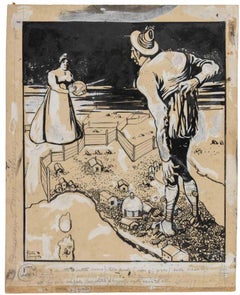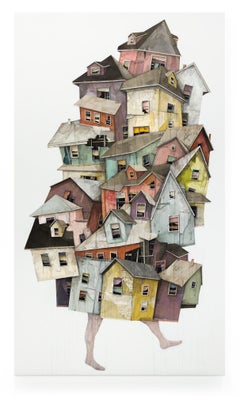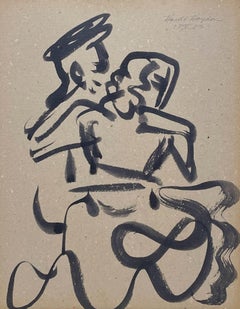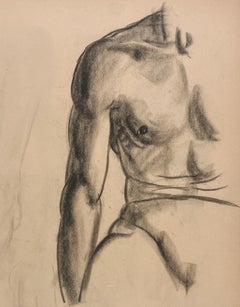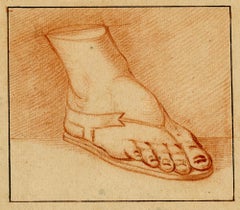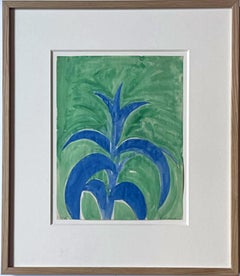Figurative Drawings and Watercolors
21st Century and Contemporary Contemporary Figurative Drawings and Watercolors
Wood, Paper, Charcoal, Pastel, Acrylic, Graphite
21st Century and Contemporary Contemporary Figurative Drawings and Watercolors
Ink, Watercolor
Mid-20th Century American Modern Figurative Drawings and Watercolors
Paper, Ink
1930s American Modern Figurative Drawings and Watercolors
Paper, Charcoal
Early 18th Century Italian School Figurative Drawings and Watercolors
Crayon, Laid Paper
1950s Pop Art Figurative Drawings and Watercolors
Watercolor, Graphite
Mid-20th Century American Modern Figurative Drawings and Watercolors
Paper, Graphite
21st Century and Contemporary Contemporary Figurative Drawings and Watercolors
Paper, Graphite, Acrylic, Pastel, Charcoal, Wood
1920s Romantic Figurative Drawings and Watercolors
Paper, Watercolor
1930s American Modern Figurative Drawings and Watercolors
Charcoal, Paper
Early 20th Century Impressionist Figurative Drawings and Watercolors
Watercolor
Mid-20th Century American Modern Figurative Drawings and Watercolors
Paper, Charcoal, Pastel
1930s American Modern Figurative Drawings and Watercolors
Paper, Charcoal
1930s American Modern Figurative Drawings and Watercolors
Pastel, Paper
21st Century and Contemporary Contemporary Figurative Drawings and Watercolors
Paper, Wood, Charcoal, Pastel, Acrylic, Graphite
1930s American Modern Figurative Drawings and Watercolors
Paper, Charcoal
1950s Modern Figurative Drawings and Watercolors
Ink
Late 19th Century Figurative Drawings and Watercolors
Watercolor, Gouache
1970s Modern Figurative Drawings and Watercolors
Ink
18th Century Rajput Figurative Drawings and Watercolors
Gold
Mid-20th Century American Modern Figurative Drawings and Watercolors
Paper, Charcoal
2010s Contemporary Figurative Drawings and Watercolors
Ink, Tempera, Pencil
18th Century Rajput Figurative Drawings and Watercolors
Gold
2010s Modern Figurative Drawings and Watercolors
Paper, Chalk
2010s Contemporary Figurative Drawings and Watercolors
Paper, Ink, Tempera
Mid-20th Century Modern Figurative Drawings and Watercolors
Ink
18th Century Rajput Figurative Drawings and Watercolors
Gold
Mid-20th Century Post-Impressionist Figurative Drawings and Watercolors
Pencil
18th Century Rajput Figurative Drawings and Watercolors
Gold
1920s Figurative Drawings and Watercolors
Watercolor
Early 20th Century Figurative Drawings and Watercolors
Gouache
20th Century Figurative Drawings and Watercolors
Acrylic
17th Century Rajput Figurative Drawings and Watercolors
Gold
17th Century Rajput Figurative Drawings and Watercolors
Gold
18th Century Rococo Figurative Drawings and Watercolors
Ink, Watercolor
Early 1900s American Modern Figurative Drawings and Watercolors
Watercolor, Pencil
2010s Contemporary Figurative Drawings and Watercolors
Tempera, Pencil, Paper
Mid-20th Century Figurative Drawings and Watercolors
Pencil
2010s Contemporary Figurative Drawings and Watercolors
Conté, Charcoal, Archival Paper, Graphite
Mid-20th Century Figurative Drawings and Watercolors
Pencil
17th Century Old Masters Figurative Drawings and Watercolors
Color Pencil, Ink, Watercolor
Mid-20th Century Figurative Drawings and Watercolors
Pencil
Mid-20th Century American Modern Figurative Drawings and Watercolors
Gouache
Mid-19th Century Realist Figurative Drawings and Watercolors
Chalk, Graphite
2010s Contemporary Figurative Drawings and Watercolors
Conté, Charcoal, Archival Paper, Graphite
2010s Contemporary Figurative Drawings and Watercolors
Pastel, Watercolor, Paper, Ink
2010s Contemporary Figurative Drawings and Watercolors
Paper, Tempera
20th Century Modern Figurative Drawings and Watercolors
Pastel
2010s Contemporary Figurative Drawings and Watercolors
Tempera, Ink, Pencil
1990s Modern Figurative Drawings and Watercolors
Paper, Oil
Mid-20th Century Figurative Drawings and Watercolors
Pencil
Mid-20th Century Modern Figurative Drawings and Watercolors
Gouache
Late 20th Century Expressionist Figurative Drawings and Watercolors
Paper, Watercolor, Gouache
19th Century Rajput Figurative Drawings and Watercolors
Gold
1930s Modern Figurative Drawings and Watercolors
Pencil, Watercolor
2010s Minimalist Figurative Drawings and Watercolors
Paper, Ink, Watercolor
1980s Pop Art Figurative Drawings and Watercolors
Pencil
2010s Contemporary Figurative Drawings and Watercolors
Archival Paper, Tempera
1980s Modern Figurative Drawings and Watercolors
Charcoal, Paper, Pastel
2010s Contemporary Figurative Drawings and Watercolors
Conté, Charcoal, Archival Paper, Graphite
